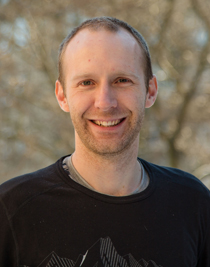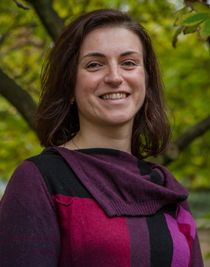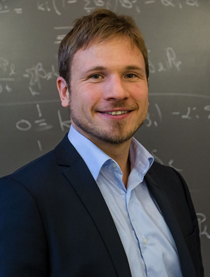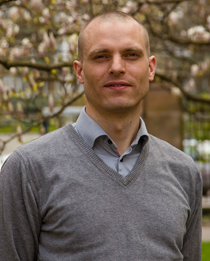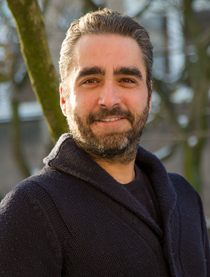Seven researchers from the Niels Bohr Institute receives grants from the Villum Foundation
The Niels Bohr Institute has obtained seven grants from the Villum Foundation’s Young Investigator Programme which is awarded to young up-and-coming scientific researchers. The awards are typically worth between 5 and 7 million kroner and the research projects are for a maximum of 5 years. The Grants will officially be awarded the 22nd of January at an event at the Black Diamond in Copenhagen.

Jason Koskinen, Assistant Professor in the research group, IceCube at the Niels Bohr Institute has received 4.5 million kroner from the Villum Foundation’s Young Investigator Programme for the project:
Neutrinos on Ice
“The neutrino is one of the most numerous and least understood of the fundamental particles of nature. This project will make leading measurements using the IceCube Neutrino Observatory at the South Pole of how neutrinos change properties along their travels”, says Jason Koskinen.
The grant will finance a postdoc, PhD student and computer resources for both current and future experimental neutrino oscillation research.
Irene Tamborra, Assistant Professor at Niels Bohr International Academy at the Niels Bohr Institute has received a grant of 5 million kroner from the Villum Foundation’s Young Investigator Programme for the project:
Theory of Astrophysical Neutrinos and Their Sources
Neutrinos are almost massless and very weakly interacting elementary particles, copiously produced in various astrophysical environments. Escaping almost unimpeded, neutrinos carry information about these sites not otherwise accessible.
“The project aims to adopt neutrinos as messengers for exploring as yet poorly understood extreme astrophysical phenomena such as core-collapse supernovae and high-energy cosmic accelerators like gamma-ray bursts, star-forming galaxies, or active galactic nuclei and to shed light on the role of neutrinos in the source dynamics”, says Irene Tamborra.
The grant will allow the hiring of two postdocs and one PhD student.
Jan Olaf Mirko Härter, Assistant Professor in the research group, Biocomplexity at the Niels Bohr Institute has received a grant of 7 million kroner from the Villum Foundation’s Young Investigator Programme for the project:
Quantifying convective precipitation extremes under changing climate
Precipitation from thunderclouds causes significant damage and may intensify as temperatures rise. Therefore, it constitutes a serious threat under a changing climate.
“We now know that thunderclouds interact, self-organize and carry a memory. The project’s aim is to create a new description of the cloud field and thus explain how precipitation extremes arise. We combine cutting-edge simulations, high-resolution observations and conceptual modeling”, says Jan Härter.
The grant will allow hiring of three postdocs.
Thomas Sand Jespersen, Assistant Professor in Solid State Physics at the Niels Bohr Institute has received a grant of 7 million kroner from the Villum Foundation’s Young Investigator Programme for the project:
Mesoscopic electron transport in correlated complex oxides
The project utilizes a new class of oxide materials which uniquely combine the key properties of semiconductors – the building blocks of all modern electronics – with effects of strong electron correlations such as superconductivity and magnetism.
“We focus on understanding the consequences of correlations in nano-scale electrical components measured at ultra-low temperatures, and the grant allows recruitment of one PhD student and one postdoc, and establishing new experimental infrastructure.
Søren Stobbe, Assistant Professor in Quantum Photonics at the Niels Bohr Institute has received a grant of 7 million kroner from the Villum Foundation’s Young Investigator Programme for the project:
Topological photonic circuits
Integrated photonic circuits are central elements of the internet and they could significantly reduce the energy consumption of information technology if they were sufficiently compact and efficient.
“This project concerns investigations of a new type of photonic materials, which allow building compact photonic waveguides with strongly suppressed losses, employing effects known from so-called topological insulators”, says Søren Stobbe. The grant will allow the recruitment of one postdoc and three PhD students.
Lars Buchhave, Assistant Professor in Astrophysics and Planetary Science at the Niels Bohr Institute and in StarPlan at the Natural History Museum has received a grant of 6.8 million kroner from the Villum Foundation’s Young Investigator Programme for the project:
Probing the Structures and Atmospheres of Small Exoplanets
“The first exoplanets were discovered only 20 years ago and we now know that most stars are orbited by planets. However, the majority of these planets are not found in our own Solar System and their nature is entirely unknown. We seek a comprehensive characterization of these planets to place our Earth and Solar System in a galactic context facilitating an understanding of where life could potentially evolve”, says Lars Buchhave. The grant will allow the recruitment of two PhD students and two postdocs.
Georgios Magdis, Assistant Professor at Dark Cosmology Centre at the Niels Bohr Institute has received a grant of 5 million kroner from the Villum Foundation’s Young Investigator Programme for the project:
Gas to Stars - Stars to Dust: Tracing Star Formation Across Cosmic Time
A major goal of modern cosmology is to determine the star-formation history of the universe; how did the galaxies form their stars over the last 13 billion years? We know that gas collapses to form stars that in turn explode and enrich the galaxies with dust. “The project will trace this circle of life in the galaxies and ‘paint’ the picture of star-formation through cosmic time” says Georgios Magdis. The grant will allow the recruitment of one postdoc and one PhD student, as well as the purchase of new equipment.

